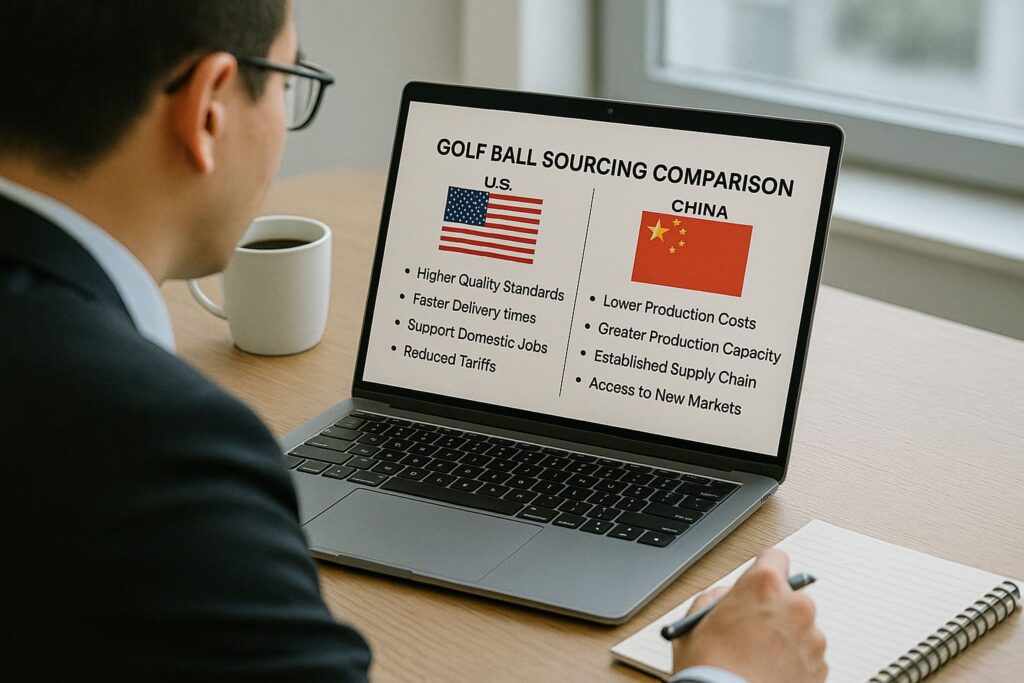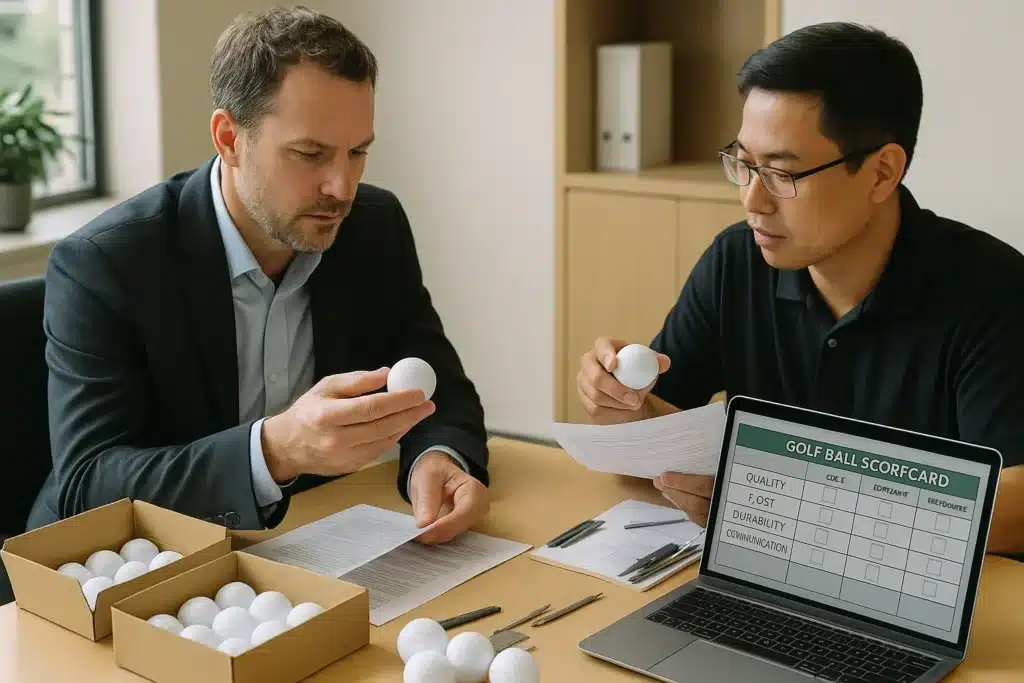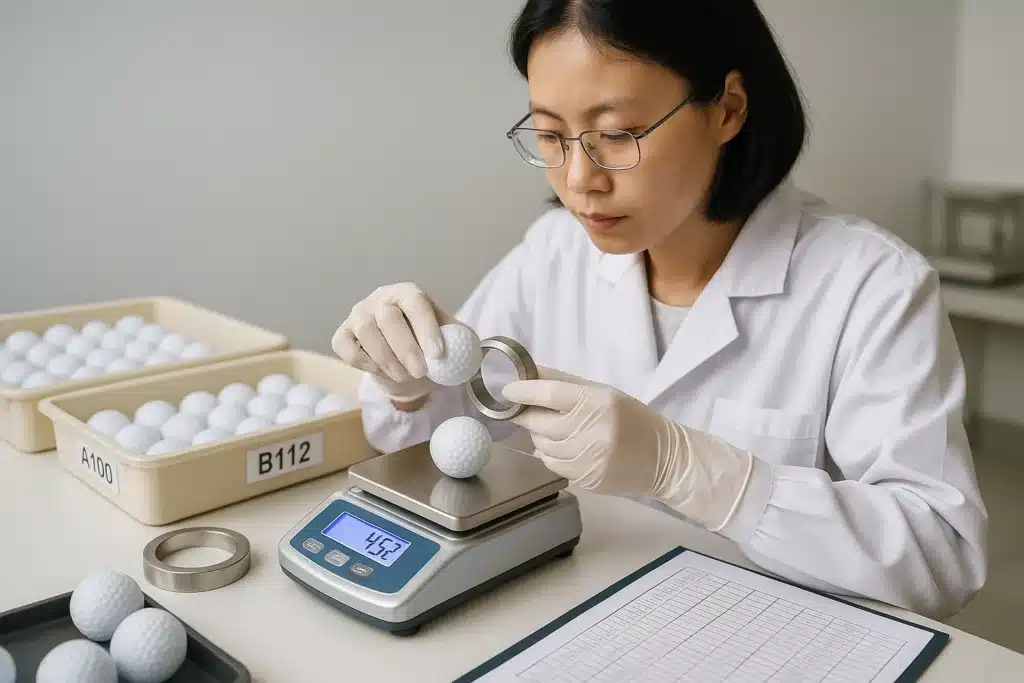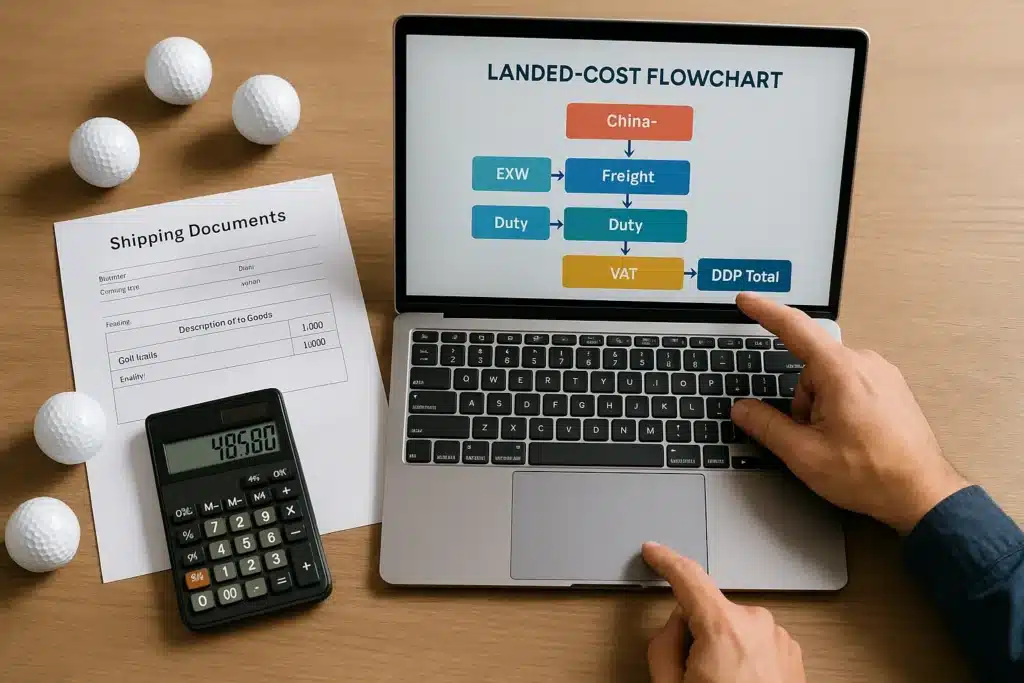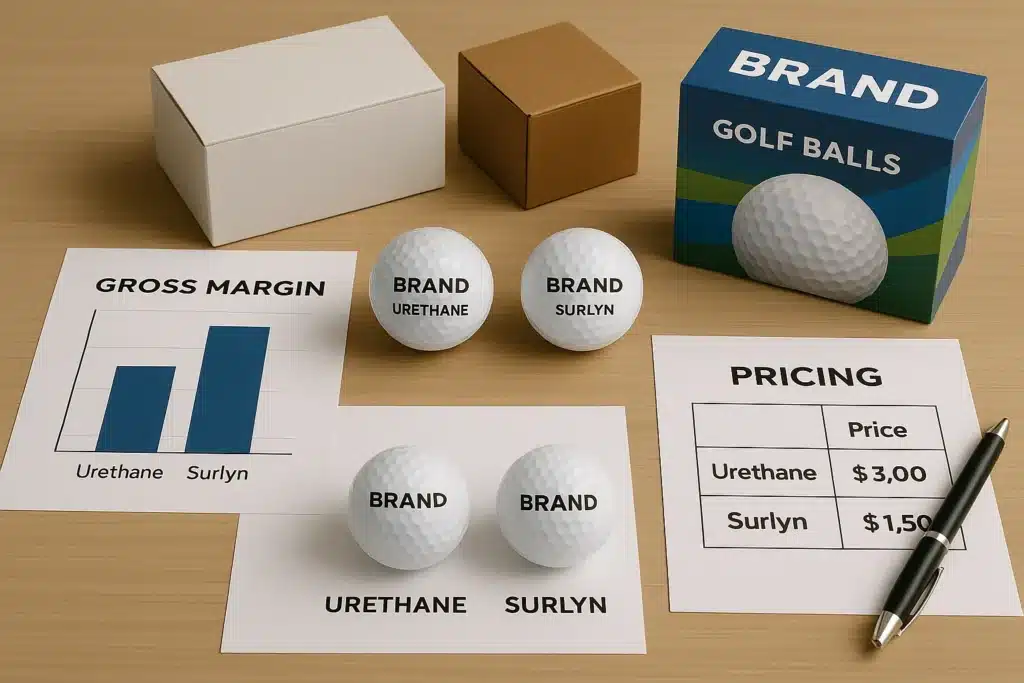You’re weighing golf ball sourcing options between the U.S. and China. This FAQ gives you clear answers on manufacturing locations, cost, customization, and strategy tailored for B2B buyers.
U.S. golf ball manufacturing focuses on premium, automated, Made-in-USA models, while China leads in cost efficiency, customization, and bulk OEM supply—making each best suited for different B2B sourcing needs.
Does the U.S. still manufacture golf balls?
Yes. The U.S. still manufactures golf balls, mainly high-end models by Titleist and Bridgestone. These factories in Massachusetts and Georgia focus on premium quality, advanced automation, and consistent performance.
Titleist’s U.S. footprint
Titleist’s Pro V1, Pro V1x, and AVX models are produced in its Ball Plant 2 and 3 facilities in Massachusetts, supported by in-house R&D and high automation.
Bridgestone’s Made-in-USA strategy
Bridgestone continues domestic production in Georgia, reinforcing brand trust and “Made in USA” positioning.
Cost difference
U.S. production costs run approximately 2–3× higher than China due to labor and compliance—but they support premium branding and supply reliability.
Why is China the world’s largest golf ball producer?
China is the world’s largest producer thanks to its OEM/ODM clusters in Fujian, Jiangsu, and Guangdong, offering massive output, cost efficiency, and flexible customization for both bulk and premium multi-layer balls.
Regional supply clusters
Manufacturing hubs in Dongguan, Xiamen, and Yangzhou power China’s vast OEM output.
Scale and pricing
Factories ship hundreds of thousands to over a million balls per month. FOB unit price ranges between $0.50–$1.20, ideal for bulk or promotional sourcing.
Growing high-end capabilities
Top-tier Chinese OEMs now deliver multi-layer urethane (Tour-level) golf balls with certifications and precision matching Western standards.

What are the main differences between U.S. and China manufacturing?
U.S. golf ball factories specialize in premium, automated production for Tour-level players, while Chinese suppliers focus on cost-effective bulk supply, strong customization, and fast lead times for global B2B buyers.
| Factor | U.S. Manufacturing | China Manufacturing |
|---|---|---|
| Target Market | Premium/Tour-level buyers | OEM, bulk, promotional, private-label |
| Cost | High (2–3× China) | Low, scalable |
| Automation | High, precision-controlled | Medium, semi-automated |
| Customization | Limited | Strong (logo, packaging, color) |
| Supply Flexibility | Stable but slower | Highly flexible, fast |
| Compliance | Strict (EPA, OSHA) | Adaptable (REACH, RoHS, etc.) |
- U.S. = automated, brand control, local production
- China = scalable, fast lead time, strong private label support
✔ True — What “quality assurance for golf ball sourcing” really means
“Quality assurance” means suppliers provide verifiable process evidence (incoming material reports, process inspections, finished product AQL, and batch traceability), and allow third-party rechecks. This lowers reorders and return risks.
✘ False — “Certification alone guarantees stable quality”
Certification is only a static compliance proof, not ongoing quality assurance. Without process control and outbound inspections, batch variations, delays, and claim risks are common.
Which option is better for B2B buyers?
U.S. sourcing fits premium, brand-focused buyers needing consistent quality, while China is ideal for cost-sensitive orders requiring customization or bulk supply. Many B2B brands adopt a hybrid sourcing strategy.
-
U.S. for premium buyers
Supports pro-level quality, consistent QC, domestic labeling. -
China for volume and customization
Ideal for bulk, logoed balls, promotions, and private labels. -
Hybrid sourcing
Flagship SKUs in the U.S., mid-tier or promo lines in China.
What trends are shaping the golf ball industry?
Key trends include sustainable materials, Chinese OEMs moving into Tour-grade, growth of private-label brands via e-commerce, and increasing automation in U.S. factories to maintain consistency and efficiency.
-
Eco-materials
Bio TPU, recycled cores, and greener inks. -
China enters Tour-grade
Advanced OEMs now deliver multi-layer urethane balls. -
Private-label growth
Driven by e-commerce and ODM packaging. -
U.S. automation leads
Smart sensors and robotic QA dominate high-end production. -
2023 Market Size: $1.31B; CAGR through 2030: 2.4%
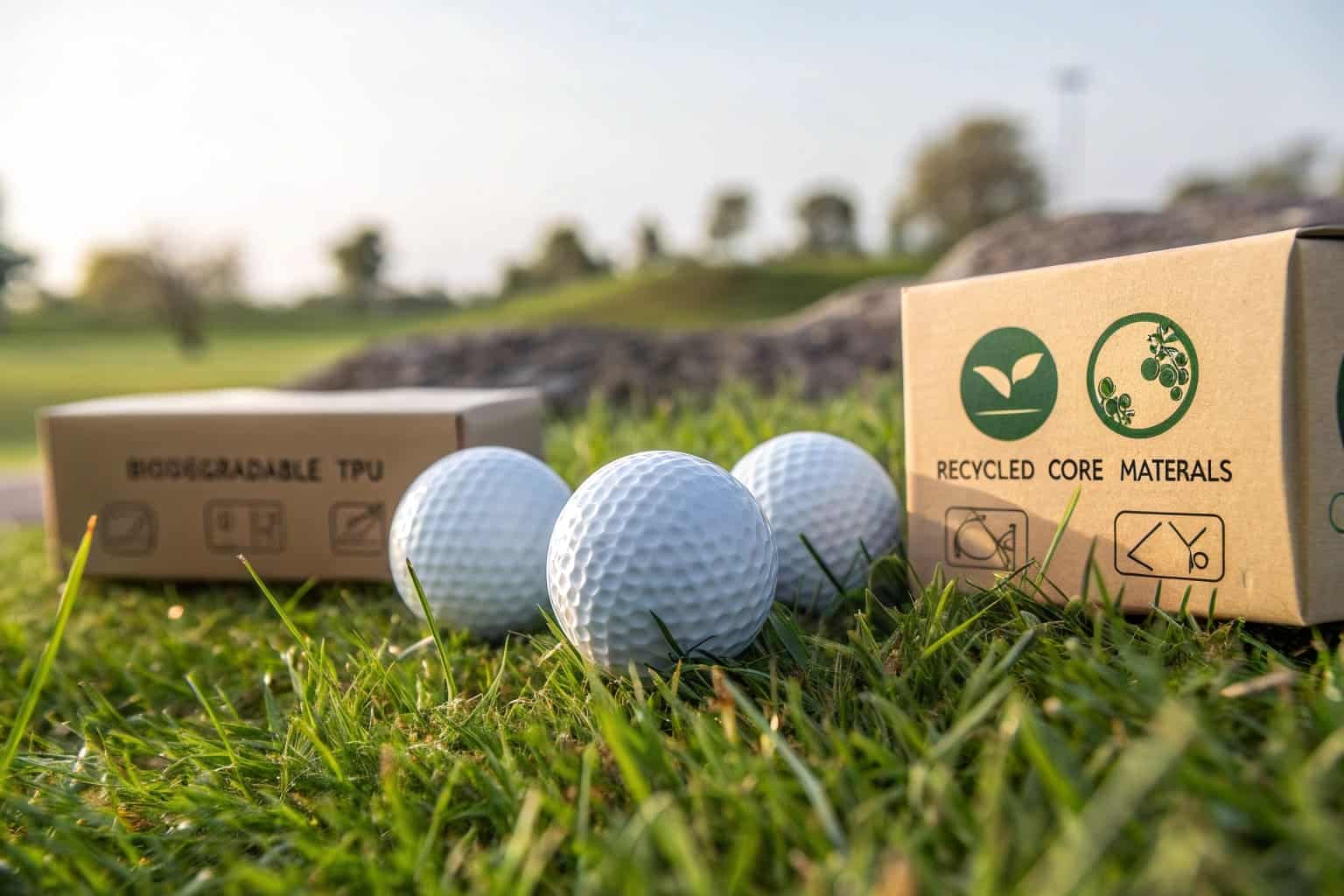
Expanded FAQ
How do logistics and tariffs affect golf ball sourcing?
Logistics and tariffs affect total cost. U.S. production avoids duties; China adds shipping and customs charges.
→ Understand FOB, CIF, DDP. Account for import taxes, insurance, and delivery time.
What certifications and compliance should buyers check?
Check USGA, REACH, RoHS, and ISO standards for play legality and product safety.
→ Verify tournament approval, chemical safety, and factory-level QA.
How long is the typical lead time?
Lead times vary: U.S. = 60–90 days; China = 30–60 days depending on order.
→ Seasonality, freight mode, and customization impact timing.
What are the risks when sourcing from China or the U.S.?
U.S. = high cost; China = possible quality issues, IP risks, fake certificates.
→ Use samples, audits, third-party inspections, secure payment.
What negotiation tips help B2B buyers?
Negotiate MOQ, price tiers, delivery, and packaging early to save cost.
→ Long-term intent and clear briefs improve supplier cooperation.
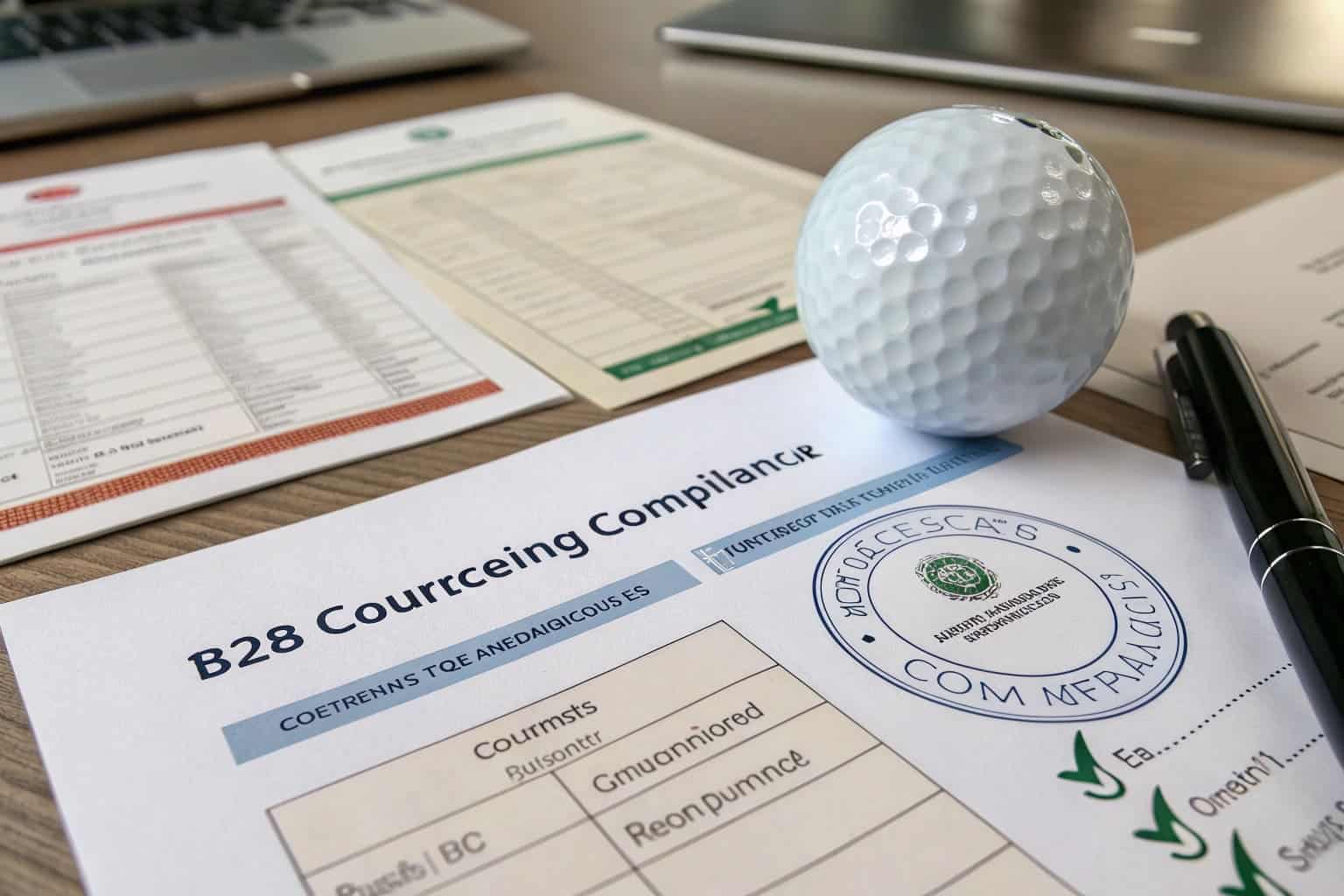
Mini Case Studies
U.S. Case: Titleist for a Premium Club
A Massachusetts-based golf club chose Titleist for local sourcing and performance assurance. The club faced pressure from members demanding Pro V1 balls used in major tournaments. They compared imports but found the consistency and brand reputation of U.S.-made balls outweighed the higher cost. By partnering with Titleist’s Massachusetts plant, they secured a stable supply with strong after-sales support. The decision reinforced the club’s premium image, and member satisfaction rose notably. Their lesson: for elite buyers, brand trust and domestic supply outweigh cost differentials.
China Case: European OEM for a Promo Campaign
A European distributor needed 50,000 logoed golf balls for a trade show campaign. U.S. suppliers quoted higher unit costs and longer lead times. A vetted Chinese OEM in Dongguan delivered within 45 days at a 60% lower cost. The supplier offered multiple logo options, eco-packaging, and flexible payment terms. The campaign achieved full delivery before the show, saving the distributor both time and budget. Their takeaway: for volume and flexibility, Chinese OEMs provide unmatched responsiveness, especially for promotional and private-label sourcing.
How to choose your supplier (Step-by-Step)
- Define use: premium, promo, or private label?
- Check certifications & QC process.
- Compare MOQ, pricing, and lead times.
- Request samples + test durability.
- Confirm logistics: DDP vs FOB.
- Negotiate terms clearly before PO.
Conclusion & Key Takeaway
U.S. = high-end, made-in-USA, consistent automation
China = cost-effective, customizable, scalable supply
Hybrid = U.S. for flagship, China for promo/private-label
Premium buyers → U.S. sourcing.
Promotional/custom buyers → China sourcing.
For B2B buyers, U.S. golf ball factories deliver premium performance, while Chinese OEMs provide cost-efficient, customizable, and scalable solutions for bulk and promotional sourcing.
Golfara helps global B2B buyers compare U.S. and China golf ball suppliers with no-pressure guidance. We provide verified OEM sourcing, compliance insights, and support for your custom golf balls journey.
You Might Also Like
Dive deeper into Asia’s manufacturing clusters and global golf ball sourcing strategies in this related article.

